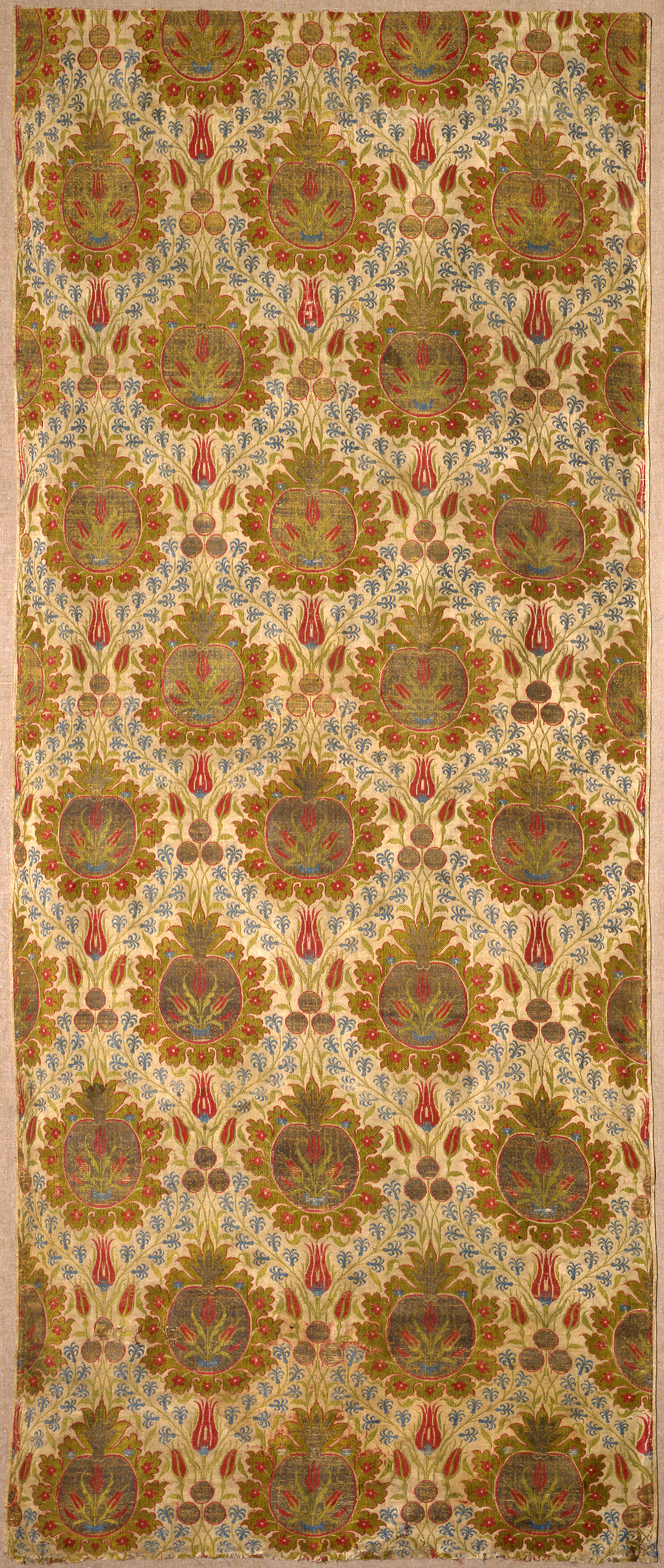|
Length of a lampas-woven textile; silk and metal lamella spun around a
silk core
Turkey; 2nd half of 16th century
Davids Samling/The David Collection, Copenhagen
H: 158; W: 64.5 cm
Like Iznik ceramics and other decorative art,
many of the Ottoman textiles were embellished with flowers from the local
flora.
This magnificent silk brocade features lush, golden
pomegranates enclosing roses, tulips, and little red flowers. The
pomegranates are surrounded by blue hyacinths and bouquets of roses and
tulips. The composition also includes three silver-colored _chintamani
_balls. The pattern is composed of oval units that are repeated in
staggered rows.
Both this kind of pattern and pomegranates were
found frequently in Ottoman textiles after c. 1550, but the type can be
traced back to the 13th century in the eastern Islamic world.
Inv.
no. 6/1980 |

